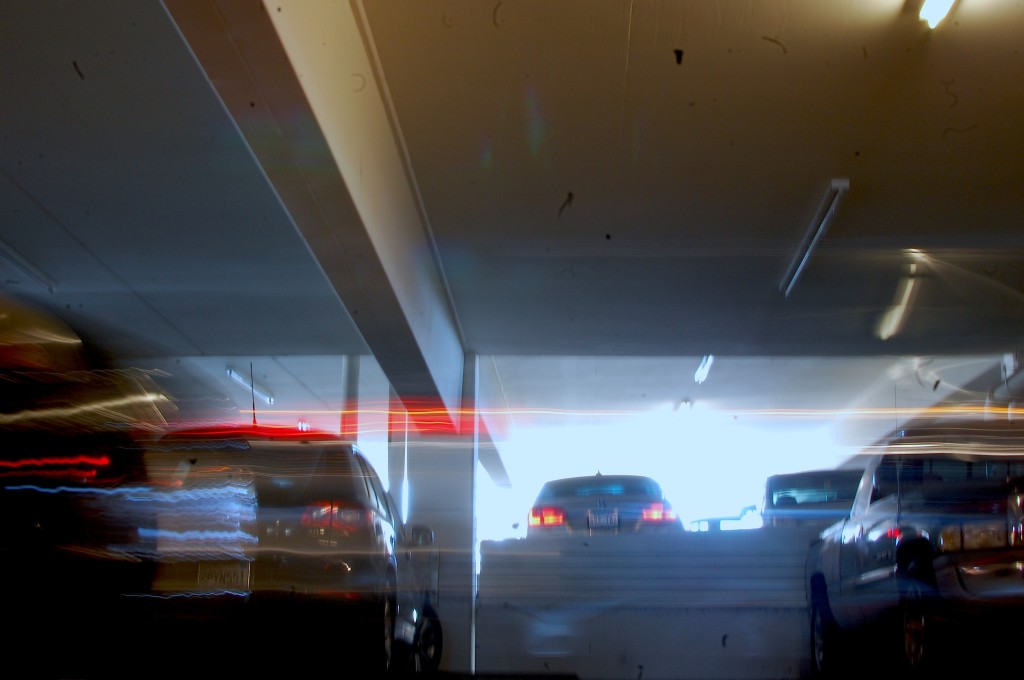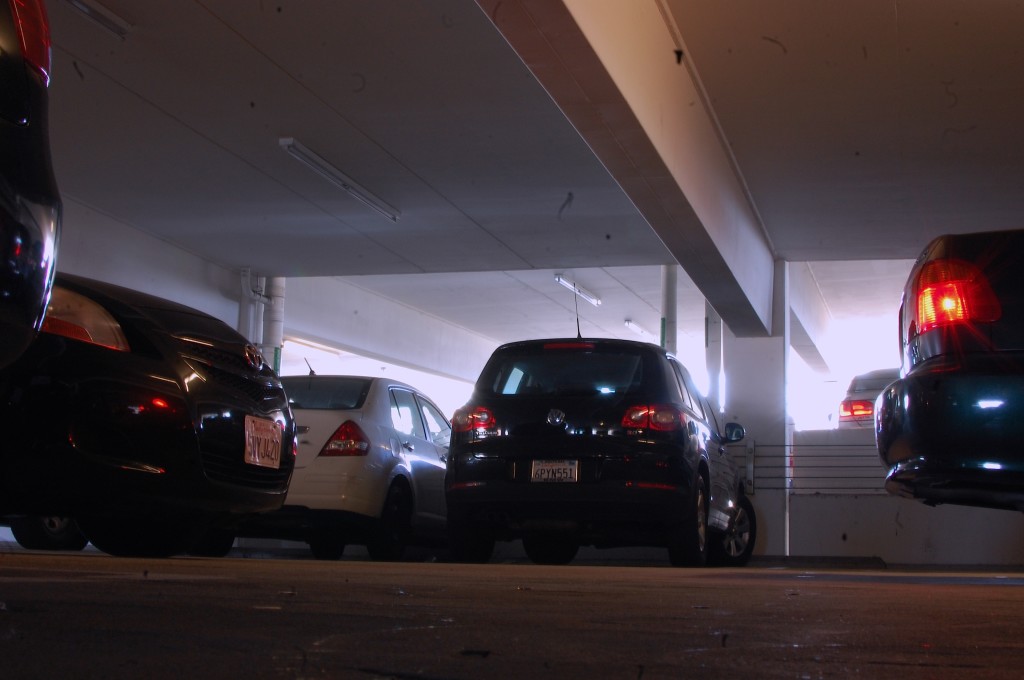Parking madness
Tail lights fill the new structure with red lighting throughout every level.
September 10, 2013
Even with the addition of the new structure, parking on campus is still at a premium. With the fall semester upon us, EC finds itself in the same position as it does at the beginning of every semester.
The parking lots resemble the 405 freeway during rush hour. There are waves upon waves of cars in every parking spot from parking Lot L to Lot F, and there is no parking to be found.
Students are whipping in and out of aisles desperately looking to find a spot before their class starts in five minutes, only to come to the realization, “Yes, I’m definitely going to be late.”
The newest four-level parking structure, which was supposed to help alleviate some of the constant congestion, has done very little to help with the problem.
The structure has become a trap for students looking to find parking fast.
The digital signs, which are supposed to show students how many spots are open on each floor, are usually incorrect and leave students driving up and down each aisle only to realize there isn’t any parking left to be found.
The college needs to act quickly and correct this ongoing problem that rears its ugly head every semester.
El Camino College is surrounded by residential areas, and each of these residential areas has strict limitations on when people can park there during the week, with most requiring permits, including the neighborhood just north of the college campus.
EC first implemented a parking fee in September 1991, according to a Los Angeles Times article.
During this time the college planned to work with the neighboring homeowners associations and the Los Angeles County Public Works Department to help homeowners obtain parking permits for the residents, according to the Los Angeles times.
As we all know, the neighborhood succeeded in receiving resident only parking permits, which almost completely eliminated any students from parking in there during the week without suffering financial penalties.
If the college were able to strike a deal with these neighboring areas that would allow students to park there during the week, that could potentially help reduce the congestion substantially.
Instead of not allowing parking between 7 a.m. to 8 p.m. in the neighborhood just east of the Child Development center, they could change it from 1-8 p.m., alleviating the morning traffic while still filling the EC on campus parking areas because the assumption is that students would attempt to park on campus first before trying off campus satelitte parking.
Most students are on campus during the morning hours, so the residents would see traffic congestion and parking spots open up after 5 p.m.
The college can also take note of what the El Camino College Compton Center has done and find a neighboring business that would allow additional parking for the students.
The Crystal Casino and Hotel has a partnership with the Compton Center that not only allows students to park there, but provides a shuttle service to transport students to and from the parking lot.
El Camino College has a large population of students, and there shouldn’t be a problem finding a suitable partner to make a similar deal with would be mutually beneficial to both the community and the college.
The ultimate goal is to make parking more readily available for students coming to the campus.
Another solution is one that should be fairly easy to implement; the college should eliminate staff only parking in the structure.
Currently, there is an area on the first level of the new four-story structure that is designated as ‘staff only’ and tends to remain fairly empty on a daily basis. Opening this area up to students could alleviate parking congestion as well.
The college is planning to build another parking structure but that can’t happen fast enough and until then it looks like the parking lots will continue to be overflowing with cars.
Let’s hope the college comes to its senses and finds a solution quickly for this issue, so we aren’t dealing with this same problem another 20 years from now.







